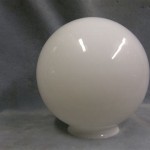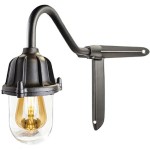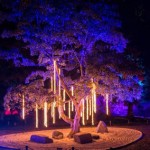Lighting Tips for Outdoor Portraits: Capturing Stunning Images in Natural Light
Outdoor portraits offer a unique opportunity to capture the beauty of nature while showcasing the personality and emotions of your subjects. With the vast expanse of the outdoors as your backdrop, you have endless possibilities to create compelling and visually appealing images. However, mastering outdoor portrait photography requires a keen understanding of lighting conditions and how to harness them to your advantage.
Whether you're a seasoned professional or just starting your journey in photography, these crucial lighting tips will help you elevate your outdoor portraiture skills and create breathtaking images that will leave a lasting impression.
1. Choose the Right Time of Day:
The time of day plays a pivotal role in determining the quality of light for outdoor portraits. The most flattering and forgiving light occurs during the golden hours, approximately an hour after sunrise and an hour before sunset. This time frame offers warm, diffused light that beautifully enhances skin tones and produces a soft, ethereal glow. Avoid shooting under the harsh midday sun, as it can result in overly bright and contrasty images with deep shadows.
2. Understand Light Direction:
The direction of light significantly impacts the mood and atmosphere of your outdoor portraits. Front lighting, where the light source is positioned directly in front of your subject, creates a flat and even illumination. While it can be useful for certain scenarios, it often lacks depth and dimension. Side lighting, on the other hand, adds dramatic shadows and highlights, sculpting the subject's features and enhancing their facial structure. Backlighting, with the light source behind the subject, produces a rim light effect and creates a sense of mystery and intrigue.
3. Utilize Natural Reflectors:
Nature provides an abundance of natural reflectors that can be strategically used to bounce light back onto your subject. Reflectors, such as white walls, light-colored buildings, or large sheets of foam board, can help fill in shadows and reduce harsh contrasts. Experiment with different angles and positions to find the most flattering and even illumination for your portrait.
4. Diffuse Harsh Light:
If you find yourself shooting in harsh midday conditions, consider using a diffuser to soften the light. A diffuser, such as a scrim or umbrella, can be placed between the light source and your subject to disperse the light, reducing its intensity and creating a more flattering effect. Diffusers help eliminate harsh shadows and produce a softer, more even illumination.
5. Experiment with Light Modifiers:
In addition to natural reflectors and diffusers, you can also experiment with various light modifiers to achieve specific effects in your outdoor portraits. A reflector with a gold or silver surface can add warmth or coolness to your subject's skin tone, respectively. A grid can be used to control the spread of light, creating a more focused and directional beam. Explore different light modifiers to discover their unique effects and how they can enhance your outdoor portraiture.
6. Pay Attention to Background Lighting:
When composing your outdoor portrait, pay close attention to the background lighting. A bright or distracting background can draw focus away from your subject and detract from the overall impact of your image. Look for a background that complements your subject and doesn't compete with them for attention. Consider using a shallow depth of field to blur the background and create a soft, dreamy effect.
Conclusion:
Mastering lighting for outdoor portraits is a journey that requires patience, experimentation, and a keen eye for detail. By understanding the interplay of light and shadow, choosing the right time of day, utilizing natural reflectors, and experimenting with different light modifiers, you can create outdoor portraits that capture the essence of your subjects and leave a lasting impression. With practice and dedication, you'll be able to harness the power of natural light and produce stunning outdoor portraits that showcase your artistic vision and technical proficiency.

11 Outdoor Portrait Photography Tips For Easy Shots

Applying The 3 Light Studio Setup To Outdoor Portraits

11 Outdoor Portrait Photography Tips For Easy Shots

The Best Lighting For Outdoor Photography Focus

Essential Lighting Tips For Outdoor Photography Lessons Skills

Lighting Gear For Outdoor Portraits B H Explora

Applying The 3 Light Studio Setup To Outdoor Portraits

Pin By David Casimer On Photography Ideas Lighting Setup Portrait Studio

Tips On How To Find Good Natural Lighting Vs Bad Light In Outdoor Portrait Photography For Beginners

Off Flash Vs Natural Light Which Is Best For Outdoor Portraits Shutterbug
Related Posts







